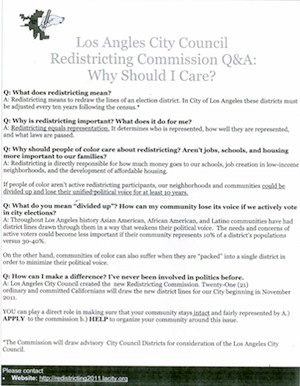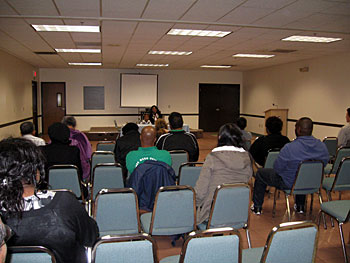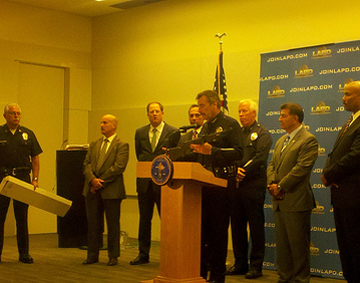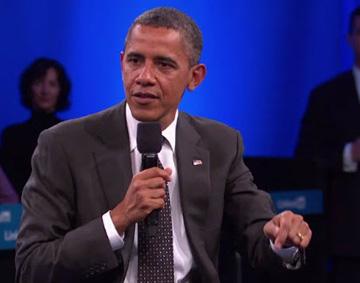
The results of the 2010 census have led to a spate of efforts to re-draw political lines at all levels, from Congressional districts to State Senate boundaries.
While those efforts have attracted considerable notice and controversy, less attention has fallen on this decade’s City Council redistricting process, which begins formally on Nov. 28.
A commission will ultimately make recommendations for the new shapes of the city’s 15 council districts, which will then be voted on by the current council members before March.

Los Angeles City Council Redistricting…Why Should I Care?” a flier reads, somewhat plaintively, and on a drizzly Friday night, not many were up to the challenge.
In South LA, Councilman Bernard Parks and District 8 Commissioner Tunua Thrash held a pre-meeting at the Constituent Service Center, designed to engage and prepare residents to make formal statements when the hearings begin the week of November 28.
Despite the lure of free sandwiches, just over a dozen people turned out; most were Councilman Parks’ employees and only a handful were residents.

“It’s extremely important that we have community members come out and testify and talk about what is their community, not only from a perspective of describing who the people are, describing what are some of the resources in those communities, but even going so far as to telling of us what are some of the boundaries in your community, what areas would you not like to see split apart,” Thrash said.
The redistricting process at every level borders on the arcane. The 21-person redistricting commission comprises one member appointed by each councilmember, as well as an additional commissioner for Council President Eric Garcetti. The City Controller and City Attorney also get one each, while Mayor Antonio Villaraigosa appoints three representatives on the commission.
The group is tasked with holding a series of public meetings before hashing out the lines. They will also consider the size of each district, natural boundaries, and “communities of interest,” a term that Thrash and Parks stressed had broad meanings, ranging from distinct neighborhoods to similar demographics, or even the areas under the flight path of an airport.
The commission will also consider the Voting Right Acts, a federal mandate that redistricting cannot discriminate against minority groups.
The boundaries for the 8th District, which saw just over 5 percent growth in the last decade, are not expected to move dramatically.
“The one thing that’s unique about the 8th District is our numbers are such that we can actually remain exactly the way we are,” Parks said. “The dilemma is that there are many districts around us that are in need of boundary changes to gain population, and that’s going to be the push and pull, as it relates to dealing with those districts.”
Although the three districts to its north and south were also mostly stable, downtown’s 9th District, to the east, rose at nearly twice that rate to overcome the 8th in population. (You can find a useful map of the council census data here at blogdowntown).
Because the 8th District is partially surrounded by other cities, including Culver City and Inglewood, which are not affected by redistricting, the areas where lines could be redrawn are limited. Some of Parks’ aides worry that few of the possibly affected residents, many of whom are not politically active, will turn up to contest those changes.
District 8 will hold its first official redistricting meeting on Dec. 12 at the Expo Center.









 Los Angeles Police Department Chief Charlie Beck said Tuesday he was proud of the results from the second year of Save Our Streets, a three-month collaboration between South Los Angeles police officers and the FBI.
Los Angeles Police Department Chief Charlie Beck said Tuesday he was proud of the results from the second year of Save Our Streets, a three-month collaboration between South Los Angeles police officers and the FBI. President Barack Obama spoke to an enthusiastic audience last night at
President Barack Obama spoke to an enthusiastic audience last night at  Police and FBI agents announced hundreds of arrests made as part of a three-month program called Save Our Streets.
Police and FBI agents announced hundreds of arrests made as part of a three-month program called Save Our Streets.








